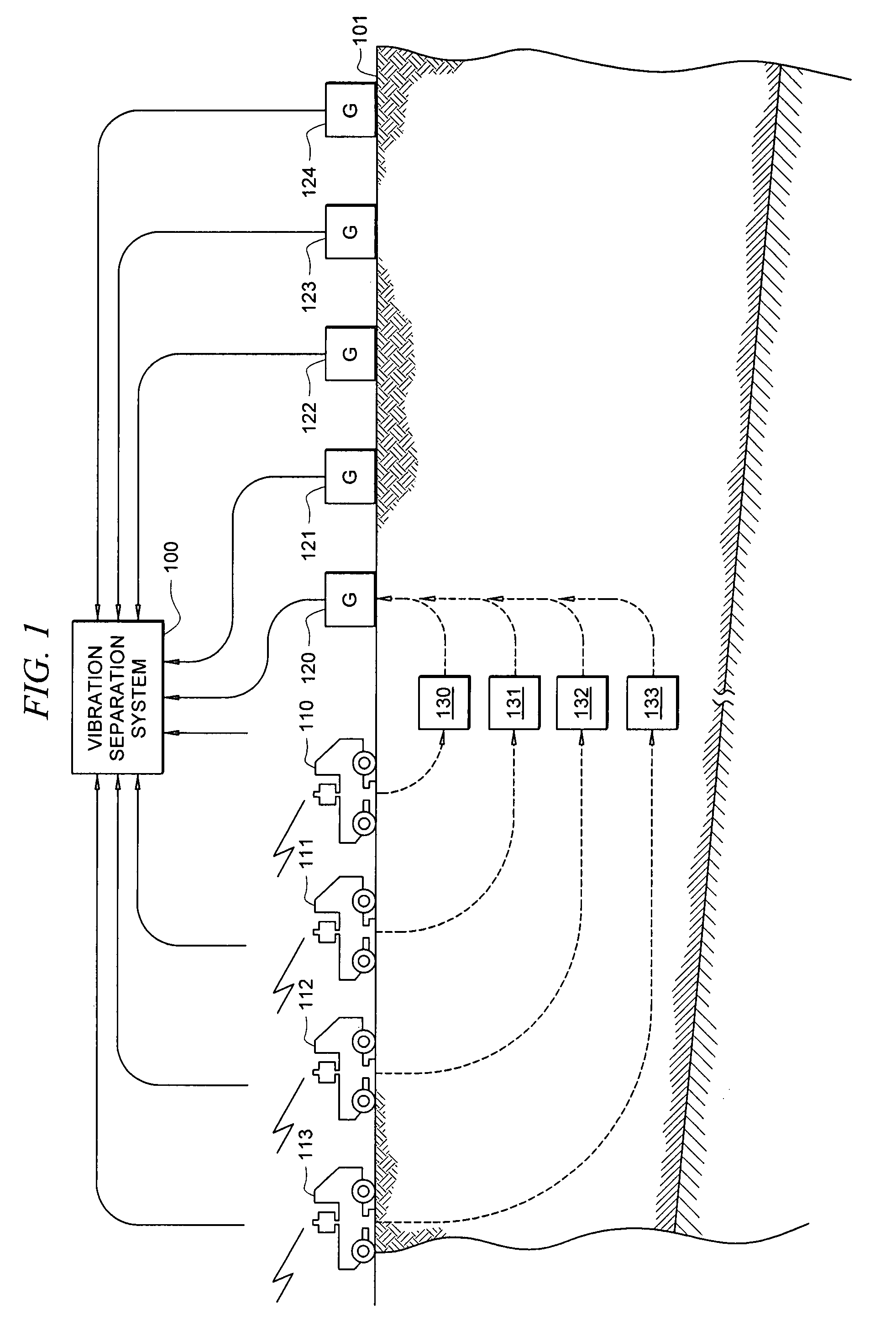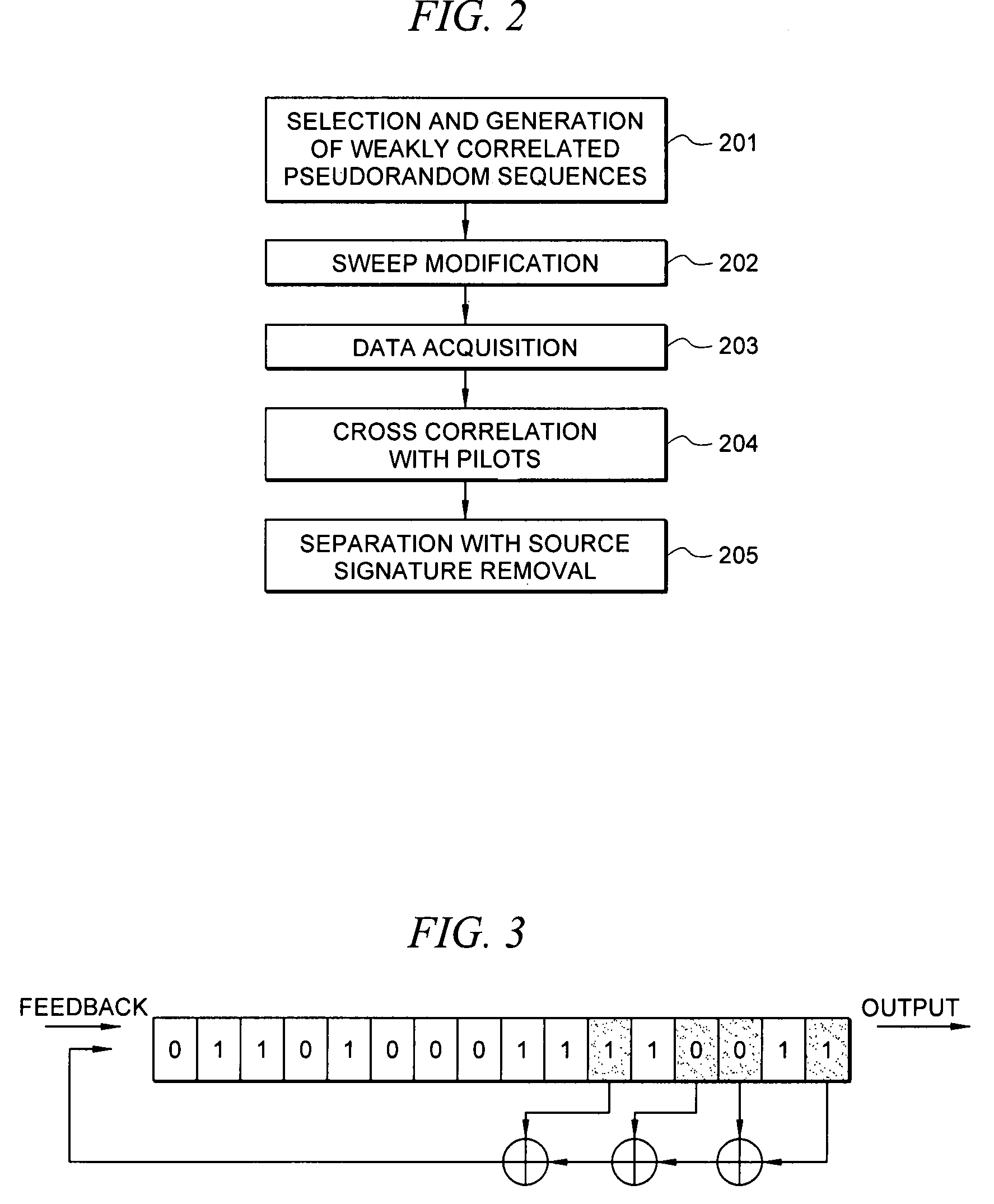Efficient seismic data acquisition with source separation
a source separation and seismic data technology, applied in seismic energy generation, seismicology, instruments, etc., can solve the problems of not capturing, many recording systems may also require additional time for a system reset, and the vibration has become the weak link in achieving efficient field operations. , to achieve the effect of reducing crosstalk
- Summary
- Abstract
- Description
- Claims
- Application Information
AI Technical Summary
Benefits of technology
Problems solved by technology
Method used
Image
Examples
Embodiment Construction
[0045]As used herein, “a” or “an” means one or more than one.
[0046]The methods and apparatus of the present invention will now be illustrated with reference to FIGS. 1 through 16D. It should be understood that these are merely illustrative and not exhaustive examples of the scope of the present invention and that variations which are understood by those having ordinary skill in the art are within the scope of the present invention.
[0047]Looking first to the exemplary survey shown in FIG. 1, four vibrators 110, 111, 112, and 113 are placed at the surface of the earth 101. Vibrators 110, 111, 112, and 113 are conventional truck-mounted vertical P-wave vibrators; however, it is understood that other vibrators, such as horizontal shear-wave vibrators used for 9-C data sets, may be utilized. In this example vibrators 110, 111, 112, and 113 are spaced close to one another and collinear at a distance of about 40 feet from one another; however, the deployment of the vibrators may vary widel...
PUM
 Login to View More
Login to View More Abstract
Description
Claims
Application Information
 Login to View More
Login to View More - R&D
- Intellectual Property
- Life Sciences
- Materials
- Tech Scout
- Unparalleled Data Quality
- Higher Quality Content
- 60% Fewer Hallucinations
Browse by: Latest US Patents, China's latest patents, Technical Efficacy Thesaurus, Application Domain, Technology Topic, Popular Technical Reports.
© 2025 PatSnap. All rights reserved.Legal|Privacy policy|Modern Slavery Act Transparency Statement|Sitemap|About US| Contact US: help@patsnap.com



